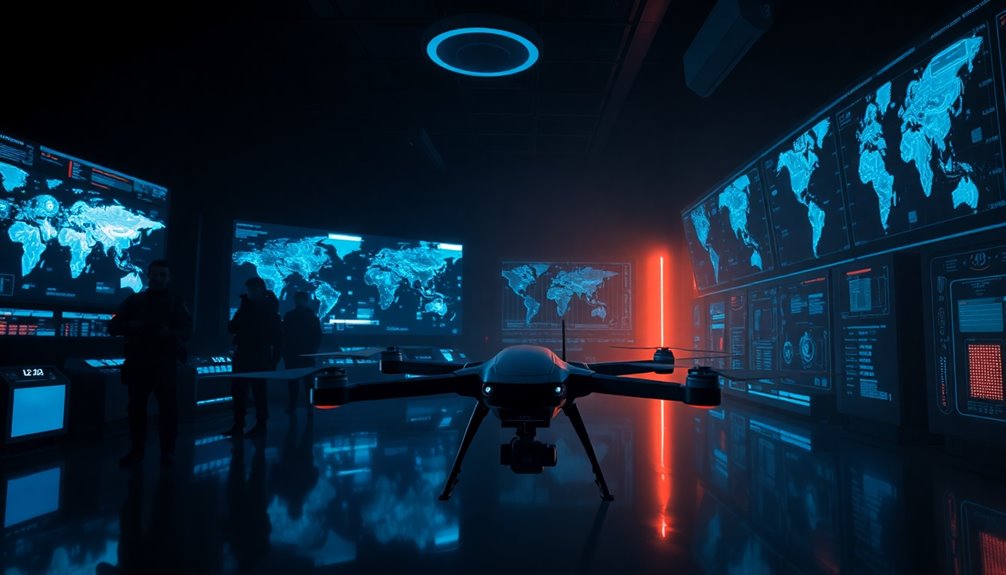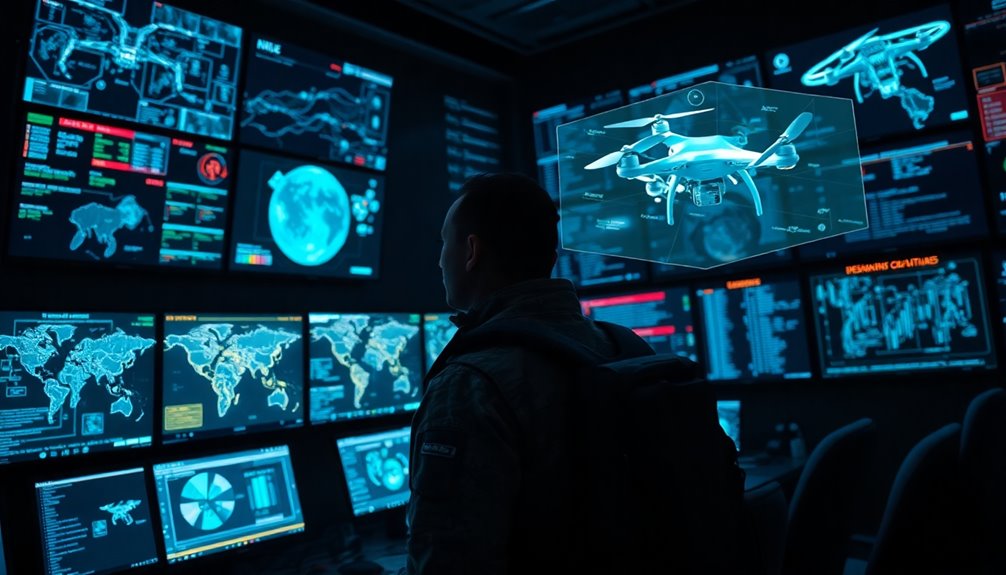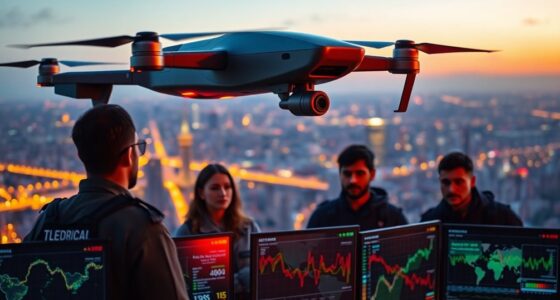
As the landscape of warfare evolves, OODA delves into the transformative technologies shaping the future battlefield. You’re witnessing an era where autonomous systems and artificial intelligence (AI) redefine military capabilities. Imagine drones operating with minimal human intervention, executing complex missions and enhancing battlefield effectiveness. These autonomous weapons not only increase operational speed but also improve accuracy, allowing for precision strikes that were once unimaginable.
Witness the evolution of warfare as autonomous systems and AI transform military capabilities, enabling precision strikes and enhanced battlefield effectiveness.
The role of AI in warfare is monumental. It enhances decision-making by providing real-time data analysis, enabling commanders to make informed choices swiftly. Picture AI systems analyzing thousands of data points in mere seconds, offering insights that could turn the tide of battle. With AI at the helm, autonomous operations become the norm, reducing the risk to human personnel while maintaining a tactical advantage. Future soldiers will operate from secured facilities using computers to engage targets, enhancing capabilities for the U.S. Army against adversaries.
Hypersonic weapons are another game-changer, traveling at speeds over five times the speed of sound. This rapid strike capability means you can engage targets before they even realize they’re under threat. The integration of hypersonic technology into military strategies represents a significant leap in offensive capabilities. As major powers like the U.S., China, and Russia invest heavily in these advancements, the race for technological superiority intensifies.
However, with advancements come challenges, particularly in cybersecurity. The sophistication of AI-powered cyber attacks poses a significant threat to critical infrastructure and military communications. As adversaries develop increasingly advanced capabilities, robust cybersecurity measures become essential. You’ll need to stay ahead of these threats by adopting innovative solutions, like quantum-secured communications, which promise to safeguard sensitive information against cyber espionage.
Moreover, the involvement of the private sector in developing military technologies can’t be overlooked. Companies are stepping up to provide cutting-edge solutions, propelling military readiness into new realms. As you navigate this changing landscape, you’ll find collaboration between public and private sectors increasingly vital in addressing emerging challenges.
In this future battlefield, success hinges on information dominance. The focus will shift from sheer firepower to leveraging data and technological prowess. Autonomous systems will seamlessly integrate into military operations, enhancing not just capabilities but also strategic decision-making.
As you witness these developments unfold, the question remains: how will you adapt to these changes in warfare dynamics? Embracing deep tech and cybersecurity innovations will be crucial to staying ahead in this new era.









